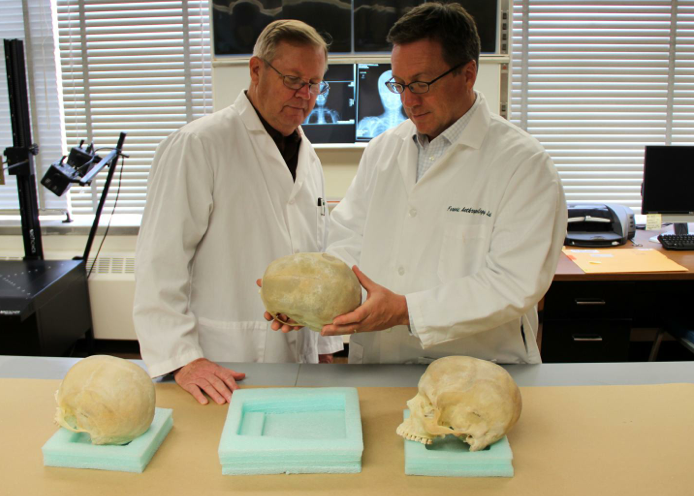Skull Fracture 'Prints' May Help Forensic Scientists Solve Child Abuse Cases

It’s not always easy to determine whether a hurt child is suffering from a simple accident or abuse. Now, Michigan State University scientists have discovered the ways in which a skull fracture may leave behind a highly distinctive signature, much like fingers leave behind their ‘print.’ With this new research, investigators may better determine the cause of an injury and so arrive at more definitive conclusions in child abuse cases.
"A major issue in child death cases is you never really know what happened," Dr. Roger Haut, a distinguished professor in biomechanics, stated in a press release. "The prosecutor may have one idea, the medical examiner another, and the defendant a completely different scenario."
Haut and Dr. Todd Fenton, a forensic anthropologist, maintain close relationships with various medical examiners, and so they are often called upon in certain, hard-to-determine cases, including skull fractures. Forensic scientists have always interpreted multiple skull fractures to mean there had been several points of impact to the head. Seeing multiple fractures, then, officials theorize child abuse has taken place.
Haut and Fenton decided to examine this theory. Strange though it may seem, the two researchers began with piglet skulls. Their already deceased specimens of piglet skulls showed mechanical properties — the way they bend and break — similar to the human skulls of babies. Through experiments, the co-researchers discovered that a single blow to the head not always causes just one fracture, but may also cause several, disconnected fractures in the skull.
"It's a bit like smashing raw hamburger into a patty on the grill," Haut said. "When you press down on the meat to flatten it, all the edges crack. That's what can happen when a head injury occurs."
Not all fractures start at the point of impact — some actually begin in a remote location and travel back toward the impact site.
Using piglet skulls, then, Haut and Fenton classified fracture patterns with a high degree of certainty — an 82 percent accuracy rate in young piglets and 95 percent on older skulls.
Shared Resource
Dr. Anil Jain, a distinguished professor in computer science and engineering, also contributed to the research by developing an algorithm to help classify fracture types. Now, the team is looking to turn Jain's algorithm into an online resource for all investigators. The new database, which will be called The Fracture Printing Interface, will permit forensic anthropologists and investigators to upload fracture patterns from abuse cases to determine a likely cause of injury.
"We will never know with 100 percent probability what happened in many of these cases, but this interface will give us a higher chance of figuring that out," Haut said. Having already solved a few cases based on their findings, Haut and Fenton presented their research and results at the annual meeting of the American Academy of Forensic Sciences.



























